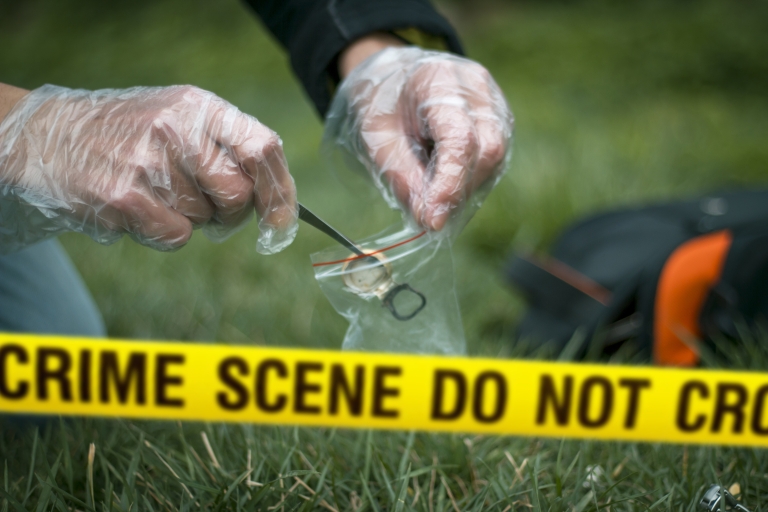
using complex equipment and instruments such as liquid and gas chromatography and scanning electron microscopy. 
doing scientific tests on items or substances, including DNA sequencing to establish identity or paternity.visiting the scene of the crime to search for important materials.fingerprints – analysing, identifying and determining the quality of fingerprints.documents and handwriting – analysing paper- or computer-based materials, in cases of fraud.firearms – examining weapons or explosives, as well as discharge residues left behind.toxicology – testing blood and urine samples for the presence of alcohol, drugs and solvents.
 biology – testing blood, other body fluids, DNA, hair or clothing in cases such as assault or murder. chemistry – testing shoe prints, tyre or tool marks, flakes of paint, glass fragments, chemicals, including inflammable materials, often in cases of burglary, fire or counterfeiting. Although evidence is typically presented as a report, you may have to attend court to give evidence in person. They may establish a link between the accused and the scene of the crime or they may help settle disputes, for example find the cause of a fire. They use various methods to identify and examine traces of physical evidence, and prepare them for use in court by the prosecution or the defence.
biology – testing blood, other body fluids, DNA, hair or clothing in cases such as assault or murder. chemistry – testing shoe prints, tyre or tool marks, flakes of paint, glass fragments, chemicals, including inflammable materials, often in cases of burglary, fire or counterfeiting. Although evidence is typically presented as a report, you may have to attend court to give evidence in person. They may establish a link between the accused and the scene of the crime or they may help settle disputes, for example find the cause of a fire. They use various methods to identify and examine traces of physical evidence, and prepare them for use in court by the prosecution or the defence. 
Forensic scientists apply science to the law.







 0 kommentar(er)
0 kommentar(er)
